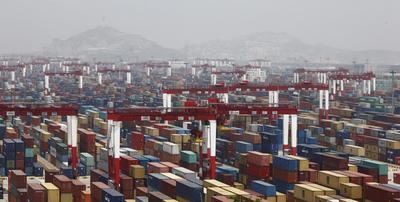In a soon-to-be-released book, China’s New Role in the World Economy, Yiping Huang notes at least three different interpretations of China’s remarkable performance over the past few decades. Justin Lin, Cai Fang and Zhou Li argue in their award-winning book, The China Miracle, that the key was transition from a strategy of heavy-industry-oriented development to a strategy of comparative advantage-oriented development. Barry Naughton suggests the term ‘growing out of the plan’ as an interpretation of China’s rise — that is, allowing incremental growth of the market-based, private activities, while maintaining support for old centrally planned activities and state-owned enterprises (SOEs). Jeffery Sachs and Wing Thye Woo, on the other hand, point out that Chinese economic success was explained not by policy intervention but rather by allowing convergence to the market system typical in East Asia — the system which previously underpinned the ascendancy of the other Asian economies.
From whichever angle you look at it, as Huang says, the consensus view is that the fundamental change leading to success of the Chinese economy was its transition from a centrally planned system to a market system. The central planning system created at least two types of inefficiency problems in the economy: misallocation of resources among different industries and activities, and productive inefficiency at the micro level. The removal of these problems was able to produce a dramatic expansion of economic activity.
But, Huang says, that’s not the end of it by a long shot. In China, as in most other East Asian economies, the shift to the market was ‘asymmetric’ — the almost complete liberalisation of product markets with the maintenance of heavy control on factor markets, especially the capital market, but labour, energy and other markets as well.
Free markets for products ensured that production decisions were based on demand and supply conditions in the economy, resources were allocated efficiently, and that China and the other East Asian economies came to benefit strongly from efficient specialisation in international trade. Distortions in factor markets were a way of providing incentives for economic entities (SOEs, large state-related conglomerates in Korea and Japan) and, sometimes, overcoming market failures.
But factor market distortions, including distortions in markets for capital, labour, land, energy and other resources, also played a role in promoting strong economic growth during the early period of reform.
But over the years, these distortions created a raft of structural problems, alongside strong economic growth: low costs inevitably led to overuse and inefficiency in the use of production inputs and allocation of resources to less rather than more innovative and productive firms in the economy. This problem is most clearly highlighted by China’s unusually high energy- and commodity-intensive GDP, but it is a problem that most of the East Asian economies have had to confront in one form or another.
In this week’s lead essay, Razeen Sally makes a similar point. ‘There is much unfinished business (in market liberalisation of the East Asian economies)’, Sally argues, ‘for economic freedom remains substantially repressed across Asia. Expanding it is vital. It should be the key principle of public policy and governance in the Asian century’.
Sally argues that most of Asia’s financial systems are outdated. Command-economy controls restrict opportunities for all but the politically well-connected. They do a bad job of turning savings into productive investments. Worse, they restrict the transition from catch-up growth to more advanced, sustainable growth based on productivity gains. ‘Financial repression’ is at the core of ‘unbalanced growth’ in a number of Asian economies, including China.
Trade and investment liberalisation across the region has created dynamic, globally integrated, world-class sectors, especially in manufacturing in East Asia but, Sally argues, there are still large pockets of protectionism, with huge variation across Asia. Red tape for property rights, contracts, licensing arrangements, paying taxes, opening and closing businesses, labour laws and customs procedures restricts investment. These barriers to trade and investment make for a business climate that is much more stifled than in the West as reflected in the World Bank Group’s Doing Business Index, where 8 of the top 10 places are occupied by OECD countries, with Singapore and Hong Kong in first and second place. Malaysia, Thailand and Japan are in the top 20, but China is 91st, Indonesia 129th and India 132nd.
Sally also notes energy markets are throttled by government intervention and state-owned enterprises. Price controls, subsidies, export restrictions and inward-investment restrictions are the norm.
Unshackling these markets in a ‘second-generation’ of reforms holds the key to continuing the Asian growth miracle and escaping the ‘middle income trap’.

